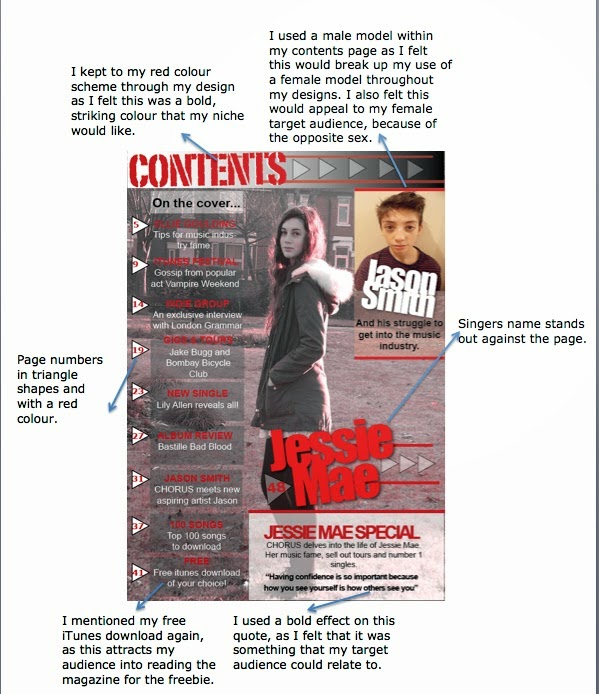For the AS media preliminary task we were asked to produce a front cover and contents page for a student magazine.
Front Cover -
For my front cover design I planned a mind-map with possible ideas, including camera location, name of the magazine, content included and colour choice. When shooting my photo I hadn't fully prepared the shoot and therefore my image didn't comply to the 'rule of thirds,' and this is something I worked on with my final front cover design. My student magazine features an image that ties in with the context of college but the photo itself was simply uploaded to InDesign with no changes or edits made in PhotoShop. But by planning my final products photo-shoot with a suitable location I was able to select a correct image for the design, and in my case this was a close up of my models face. The photo I used for my final product complied with typical conventions seen in music magazines as the my model is making direct eye contact with an audience, however I had deviated from typical codes through the colour choice of my main image. By using photoshop I was able to apply a contrast and adjust levels to create a saturation which tied in with my colour scheme and this colour choice differs to magazine examples I had looked at, as the majority features a full coloured image, just like my student magazine.
The front cover of my student magazine is very boxed, and harsh against the page and this is an element that didn't work on the page design. By grouping text into a box, I wasn't making effective use of page space and therefore it meant my design wasn't very eye catching. For my music magazine I had developed my knowledge of page layout by analysing exemplar music magazines in the ways in which they place text around an image. And I have applied my knowledge of this to my final magazine design, by using the opacity tool to reduce the colour impact on the shape work. As well as this I had played around with font sizing to fill in spacious gaps on my design and this is something my student magazine featured a lot due to the boxed design.
The title of my student magazine, hadn't been designed effectively with the tools in indesign and this showed on the final outcome of the design. By using singular text with no effect, I hadn't made the masthead bold enough to stand out against the page and it had blended in with the rest of my design. But my final music magazines masthead has been created with a design element, by using a single red box I was able to place my font on top of this in two varied colours to create the desired contrast I had wanted. By using a white on top of a black, I was able to make a feature of my masthead which had a greater impact. Finally for my masthead i had tilted the text at a slight angle, and this subtle difference meant that the masthead was clearly recognisable. And this is something my student magazine had lacked.













